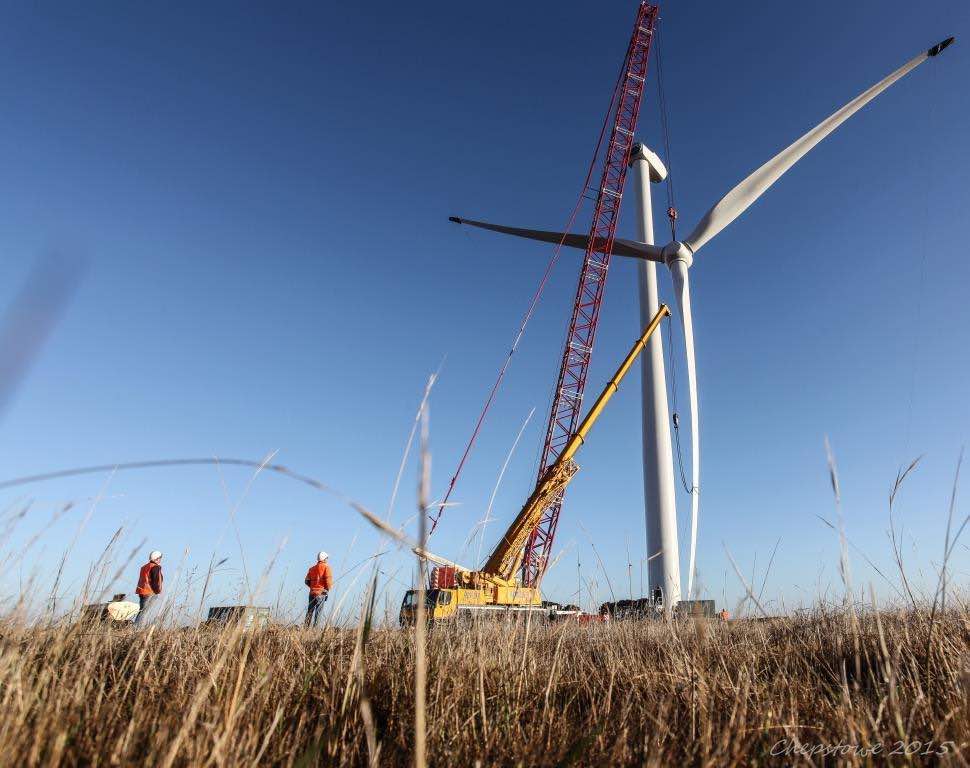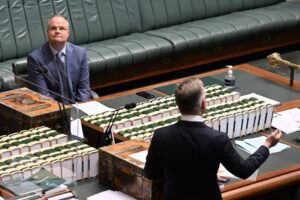At last week’s Energy and Climate Change Ministerial Council Meeting in Canberra, one of the “priority actions” committed to by Australia’s state and federal energy ministers was to get started on the establishment of a national renewables developer ratings scheme.
The introduction of a rating scheme for developers of large-scale wind, solar, storage and transmission projects was one of the key recommendations from a major review of community engagement, led by Australian Energy Infrastructure Commissioner Andrew Dyer.
The review, commissioned by federal energy minister Chris Bowen, found that repeated instances of poor community engagement had led to a “material distrust” of renewable energy project developers and, in particular, developers of major new grid transmission projects.
Last week, Bowen said the state and territory ministers had agreed to continue to work together on all nine recommendations put forward by Dyer and his team, but particularly on the national developer rating scheme, which he described as the “key recommendation” out of the nine.
“They’re all important, but [particularly] that national developer rating scheme, which is designed to ensure that members of communities know if they’re dealing with a renewable energy developer that it’s a developer of good faith and good reputation with a good star rating,” Bowen said at a press conference on Friday.
“Industry, peak bodies, consumer groups and other stakeholders will be invited to participate in a reference group to contribute to the design of the scheme,” the ministers said in a meeting communique.
So what will this ratings scheme look like – and how will developers be rated?
The short answer is, no one really knows yet.
In response to questions at a press conference after the minister’s meeting on Friday, Bowen described it as a “complex piece of work… [that] we want to get right, so we’re not going to do it in the next couple of weeks.
“But … we have agreed to prioritise it.”
Asked whether developers are expressing interest in signing up, Bowen had this to say: “It’s a bit early for developers to express interest or not when there’s no scheme up and running yet, but it’s a scheme which I think good developers will be very keen to participate.”
Meanwhile, Dyer and his team have laid out some reasonably clear guidelines on how the scheme might work.
“To be eligible for an acceptable rating score to achieve and maintain/improve their rating, a developer would be assessed against a published set of criteria,” the report says.
“The assessment criteria would be developed in consultation with key stakeholders including governments, industry and community peak bodies.
“The scheme should provide transparent, periodic ratings of developer engagement performance and capability. It should also be designed in such a way to motivate ongoing continuous improvement by the developers.
“Developers with a current and acceptable rating may have access to a wide range of federal and state programs.
“To expedite its launch, it is suggested that the scheme operate on a voluntary basis, where developers can opt in or out at any time.
The Dyer report also lists a number of key considerations for designing and implementing a developer rating scheme. They are:
– A rating scheme for developers may be best managed and provided at a national level, rather than developers having to manage and maintain multiple ratings schemes across all state and territory jurisdictions.
– There would need to be an upfront effort to enable developers to apply for an initial rating, and to be assessed in a timely manner.
– The scheme could be either mandatory or voluntary. “There is merit for the rating scheme to be a voluntary scheme for developers to establish the scheme and gain a critical mass of participants,” the report says.
– As well as including developers of new generation and storage projects, owner-operators of generation and storage projects and developers and operators of new transmission projects, the scheme might also take in construction companies that can have a significant presence and role with community engagement, along with consultants and contracting firms that are heavily engaged with communities and landholders in their roles.
– To get the scheme up and running as soon as possible, it might be best for federal government to provide initial funding, then move it to a user pays model on a cost recovery basis once the scheme is well established.
Will this fix the community engagement problem?
Certainly not on its own, but it may help. How the scheme is designed will be key to its success.
Some developers RenewEconomy has spoken to have expressed concerns a ratings system could skew the market further in favour of energy industry incumbents, or simply add another layer of complexity to an already fraught process for developers.
RE-Alliance, which has been campaigning for years for social licence and effective community engagement to be prioritised by industry and governments, said on Friday that it supports the recommendations in the Review, but more concrete and ambitious actions are required.
In particular, the group is calling for government funding to set up Local Energy Hubs, which it describes as “physical drop-in centres” set up to demystify the energy transition, bolster local engagement, and independently facilitate communication between energy developers and the community.
“Imagine if you could walk into a one-stop-shop to understand why new energy infrastructure was needed in your community, and then have all the information you need in one place to work out how your community could benefit?” says RE-Alliance national director Andrew Bray.
“These Local Energy Hubs could bring communities into the conversation from the very beginning – which is crucial.
“State and federal governments are spending billions to attract investment in renewable energy, but a financial investment in building trust in the process is just as important,” Bray says.
Meanwhile, in Victoria…
The Labor Allan government is taking its own steps towards boosting community engagement in the state with the introduction of the National Electricity (Victoria) Amendment (VicGrid) Bill 2024.
“This major change to the way energy infrastructure is planned in Victoria will see VicGrid undertake planning and consultation on renewable energy zones, ensuring that community views are taken into account at the start of the planning process,” the government said on Tuesday.
Under the legislation, the state effectively takes over transmission planning from the Australian Energy Market Operator, in a move designed to allay community concerns and clear the path for its ambitious 95 per cent renewables target.
The Bill also locks in payments to landholders who host energy infrastructure – $200,000 per kilometre of new transmission hosted, indexed and paid over 25 years. These payments are in addition to compensation paid to landholders for the impact of infrastructure on their land.
And it will allow offshore wind developers to obtain long-term tenure over public land for offshore electricity infrastructure – providing certainty to industry.
“Victoria is undergoing a once-in-a-generation energy transition. We’re making the community central to this and doing things differently to make sure it’s done right,” says Victorian energy minister Lily D’Ambrosio.
“We’re making sure energy infrastructure is delivered in a way that reduces impacts and provides benefits for the community and encourages investments that will keep the lights on and secure Victoria’s energy future.”









